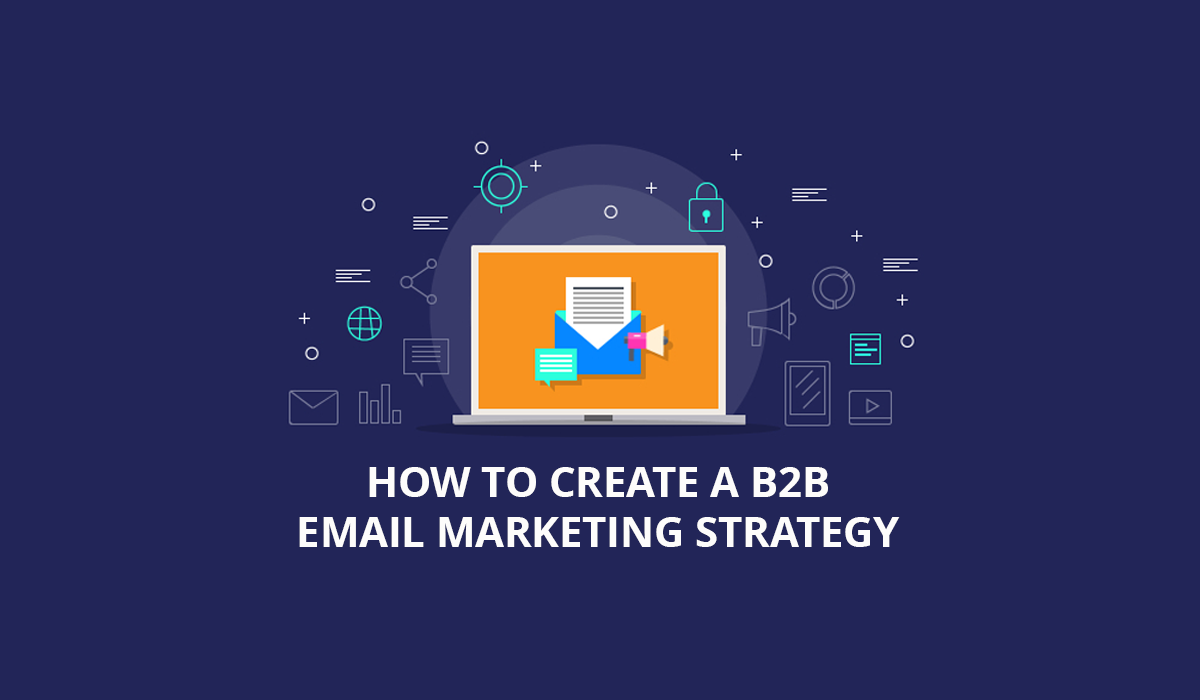
Are you still confused about creating a B2B email marketing strategy?
Most B2B lead generation companies acknowledge that email marketing generate the most leads and, eventually, the highest ROI of any marketing channel. Successful B2B email marketing campaigns frequently employ a mix of inbound and outbound emails to reach new and existing customers.
The key to a successful B2B email marketing strategy is to deliver relevant and valuable content that covers the pain points and needs of the users.
It also gives users a clear call to action that encourages them to take the next step in the sales funnel. Personalization, segmentation, and automation are all crucial elements of an email marketing strategy, allowing you to customize your messages per your target audience’s specific needs and interests.
A robust strategy also helps analyze your email campaign’s performance and identify improvement areas. With the right approach and tools, B2B email marketing can be a powerful way to engage your audience.
Understanding B2B Email Marketing
B2B email marketing is a type of digital marketing strategy where businesses use email campaigns to promote their products or services to other businesses.
Email campaigns may include newsletters, product updates, promotional offers, and other targeted messages designed to engage with the recipient and encourage them to take action.
Email marketing continues to contribute heavily to marketing campaigns in B2B. Here are some statistics that might surprise you!
B2B Email Marketing Statistics That Will Surprise You
One of the most effective marketing channels for B2B companies is email marketing, which is still very much in use today. As you’ll see from the statistics we’ll share below, when done correctly, it can give you the best return on investment for your marketing efforts.

Creating a successful B2B email strategy is crucial for businesses because it can help you in lead generation, increasing brand awareness, and driving sales. Let us understand how you can create an email strategy for your business.
Steps to Create a Successful B2B Email Marketing Strategy
An email marketing strategy is vital as it allows businesses to reach potential customers, build relationships, and drive sales. With the right strategy, B2B email marketing can help companies establish credibility, promote their products or services, and keep their brand top-of-mind with their target audience.
A well-crafted B2B email marketing campaign can establish credibility and trust with prospects as it nurtures them into your sales funnel.
Since email marketing helps generate B2B leads and revenue, let’s delve deeper and discuss how a successful B2B email marketing strategy requires careful planning and execution.
Here are a few tips for creating an effective B2B email marketing strategy:
-
Create a profile of your target clients
When you target a specific B2B organization, you’re targeting that company’s buying center—the individuals who decide whether or not the company buys your product.
If you’ve been doing marketing, you’ve probably heard about Ideal Customer Profile (ICP) or the audience vignette generated by summarizing your target customers’ demographics, behaviors, qualities, issues, and needs.
Because your B2B targets are groups, you’ll need to expand your ICP to include various columns for each function in the target company’s buying center.
-
Think like a consumer
You may better understand what emails suit each individual by putting yourself in the shoes of each member of your target client’s buying center using a customer profile matrix.
For instance, a client or prospect will likely be interested in a “how-to manual” related to your product or service. The same email would probably be deleted immediately if it were sent to a customer who dealt more with the purchase and renewal of a product than with its actual use.
Your emails will be more ROI-driven while generating fewer unsubscribe requests or spam complaints if they are more relevant to the demands of your targeted recipients.
-
Implement email segmentation
Customizing emails for every individual at a company will be difficult while conducting campaigns at high volumes.
Using email segmentation tools integrated into most email marketing platforms, you can categorize your subscribers based on their traits. Make lists for each buyer’s personas rather than organizing contacts by business or industry.
-
Make use of templates
Email templates are another valuable tool to keep in your toolkit for working smarter, not harder. Building a robust library of high-quality templates takes effort, but you’ll be glad you did when you can easily send hundreds of emails.
The important thing while using templates is that the email’s recipient should not be able to detect it’s a template. Create a template library for each sort of email you regularly send, utilizing the same brand aspects but ensuring each template is visually distinct. Try using a unique template for every campaign for the following:
- Welcome mails
- Thank you mails
- Newsletter mails
- Case studies mails
- Unsubscribe mails
-
Automate to save time
B2B email marketing automation enables you to execute precise activities that would take far too long to complete manually.
The sequencing tool of your email marketing software will also allow you to schedule drip campaigns to be sent out over weeks. That’s a very common example, but there are dozens more:
- Contacts can be added and updated based on form inputs on your website.
- Divide your subscribers into separate lists based on their activities. (e.g., event attendance).
- Send pertinent updates to colleagues about new subscribers, B2B email lists, and sales leads.
Now that you know how to create a B2B email marketing strategy, here are some proven strategies to boost your campaigns.
Tried-and-Tested B2B Email Marketing Strategies
B2B email marketing is constantly evolving, and keeping up with the latest trends and strategies is essential to stay ahead of the competition.
A business should understand the importance of B2B email marketing because they allow targeted messaging and personalization, making it easier to tailor communication to specific audiences.
Additionally, email marketing provides valuable data and analytics that can be used to improve future campaigns.
Here are some of the B2B email marketing strategies that you should try:
- Interactive emails: Interactive emails are those emails that allow recipients to engage with the content and which significantly increase engagement rates. A few examples of interactive emails include quizzes, polls, and surveys.
- Hyper-personalization: It takes customization to the next level by using data to create highly personalized emails that speak directly to the recipient’s interests, pain points, and goals.
- AI-powered automation: AI-powered automation can help streamline the email marketing process and improve the relevance and timing of your email campaigns. AI can be used to personalize email content, predict recipient behavior, and optimize email delivery times.
- Video emails: Video emails can be a highly engaging and memorable way to communicate with B2B prospects and clients. Videos can showcase products, demonstrate, and share thought leaders’ content.
- Account-based marketing (ABM): B2B Account-based Marketing is a highly targeted approach to B2B marketing that focuses on building relationships with specific target accounts. ABM email campaigns can be personalized and tailored to every account’s needs and pain points.
- Mobile optimization: With more people checking their email on mobile devices, optimizing your emails for smartphones is essential. This means using responsive design, clear and concise messaging, and easy-to-click calls to action.
- Social proof: Including social media proof in your B2B email campaigns can help build recipient trust and credibility. This can include customer testimonials, case studies, and industry awards or recognition.
Conclusion
A successful email marketing strategy in B2B requires careful planning and execution. You can increase open and click-through rates by building a targeted email list, segmenting your list, personalizing your emails, and creating compelling subject lines.
It’s also essential to keep your emails concise, use visuals to enhance your message, and continually test and optimize your campaigns.
Hyper-personalization, AI-powered automation, and interactive emails are among the best strategies you can try. By focusing on personalization, relevance, and engagement, you can build strong relationships with prospects and clients and drive business growth through B2B email marketing.
Are you ready to take your email game a notch? Binary Demand is just a click away.








